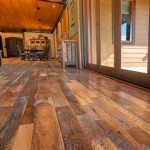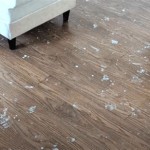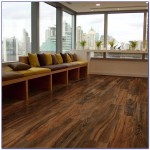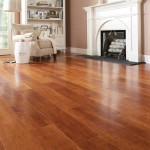Can You Use Vinyl Floor Tiles On Walls?
Vinyl floor tiles are a popular choice for flooring due to their durability, affordability, and ease of installation. However, some homeowners are exploring the possibility of using these tiles on walls for a unique and potentially cost-effective design solution. This article explores the feasibility, benefits, drawbacks, and installation process of using vinyl floor tiles on walls.
Feasibility and Suitability
While vinyl floor tiles are designed for floors, they can generally be installed on walls. The primary concern is the adhesive used. Floor tile adhesive is often stronger than necessary for wall applications and may damage the wall if removal is ever required. Additionally, the weight of the tiles can be a factor, especially with larger format tiles. Lighter-weight vinyl tiles are better suited for wall installations. It's crucial to consult the manufacturer's recommendations to ensure the specific type of vinyl floor tile is suitable for wall application.
Certain environments may not be suitable for vinyl floor tiles on walls. High-humidity areas like bathrooms and showers are not recommended due to the potential for moisture to seep behind the tiles and cause damage. Extreme temperature fluctuations can also affect the adhesive and the tiles themselves, potentially leading to warping or peeling. Well-ventilated areas with stable temperatures are ideal for this application.
Benefits of Using Vinyl Floor Tiles on Walls
Using vinyl floor tiles on walls offers several potential advantages. One key benefit is cost-effectiveness. Vinyl flooring is often less expensive than traditional wall coverings like tile or wallpaper. This can be a significant advantage for budget-conscious projects. Furthermore, the vast array of designs and styles available in vinyl flooring provides ample opportunity for creative expression. Homeowners can choose from various colors, patterns, and textures to achieve a unique and personalized aesthetic.
Durability is another compelling advantage. Vinyl flooring is known for its resistance to wear and tear, making it a practical choice for high-traffic areas. This durability translates well to wall applications, offering protection against scuffs, scratches, and impacts. Furthermore, vinyl tiles are generally easy to clean and maintain, requiring only simple wiping with a damp cloth. This makes them a practical choice for busy households.
Drawbacks and Considerations
Despite the benefits, several drawbacks should be considered. The adhesive used for flooring can be difficult to remove, potentially damaging the wall surface during removal. This can be a significant concern for renters or those who frequently redecorate. Additionally, while vinyl tiles are durable, they are not impervious to damage. Sharp objects can scratch or puncture the surface, and exposure to excessive heat can cause warping or discoloration.
Wall preparation is crucial for successful installation. The wall surface must be clean, smooth, and free of any imperfections. Uneven surfaces can lead to adhesion issues and an unprofessional finish. Proper preparation may involve patching holes, sanding down rough areas, and applying a primer. This can add time and cost to the project.
Installation Process
The installation process for vinyl floor tiles on walls is similar to floor installation, with a few key differences. As mentioned, using a suitable adhesive is crucial. A high-quality wall tile adhesive, or one recommended by the manufacturer, should be used. Applying the adhesive evenly to the back of the tile is essential for proper adhesion. Starting in a corner or along a straight edge, the tiles should be carefully positioned and pressed firmly against the wall. Using spacers can ensure consistent grout lines, if desired.
Cutting tiles to fit around corners, outlets, and other obstacles is a common part of the process. A utility knife or tile cutter can be used to make precise cuts. Measuring accurately is critical for a professional-looking finish. After the adhesive has dried, grout can be applied to fill the gaps between the tiles, if applicable. Grouting provides a finished look and helps to seal out moisture. Excess grout should be removed promptly to prevent staining.
Alternative Options
For those concerned about the potential drawbacks of using floor tiles on walls, alternative options exist. Vinyl wall planks or panels, specifically designed for wall applications, offer a similar aesthetic with easier installation and removal. These products often come with a peel-and-stick backing, eliminating the need for messy adhesives. Wallpaper designed to mimic the look of tile is another option, offering a wide range of patterns and colors.
Ultimately, the decision of whether or not to use vinyl floor tiles on walls depends on individual circumstances and preferences. Careful consideration of the benefits, drawbacks, and installation requirements is crucial for a successful and satisfying outcome. Consulting with a professional installer can provide valuable insights and guidance.

How To Install Vinyl Plank Flooring On Walls Europine

Tips On Installing Vinyl Flooring Walls Ll

Wall Cladding With Flooring Material 2024 09 23 Floor Trends Installation

Luxury Vinyl Plank Tile Wall To Floors

Bathroom Shower Vinyl Wall Panel Vs Tiles Which One Should You Choose Step Guard Floors

How To Install Groutable Vinyl Tile

Can You Use Vinyl Flooring On Bathroom Walls Answered W Tips Rustic Remodel Small Lighting

Vinyl Floor Tiles Above Tub Surround Update

Vinyl Floor Tiles On Bathroom Wall

How Get Self Stick Vinyl Tile To Walls Flooring Repairs
See Also







